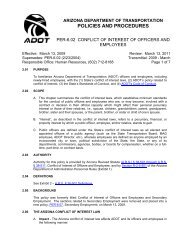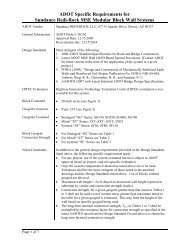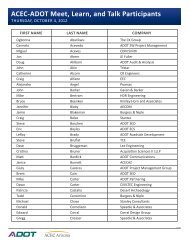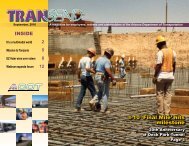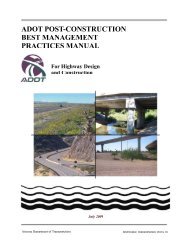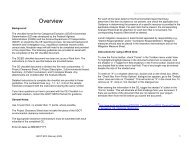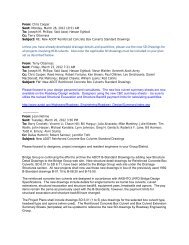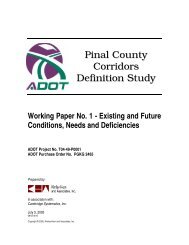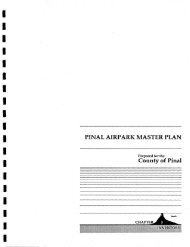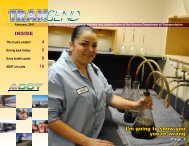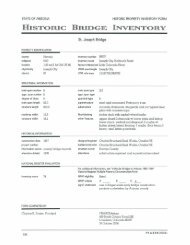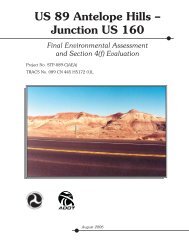I-10 Twin Peaks Traffic Interchange, Environmental Assessment
I-10 Twin Peaks Traffic Interchange, Environmental Assessment
I-10 Twin Peaks Traffic Interchange, Environmental Assessment
You also want an ePaper? Increase the reach of your titles
YUMPU automatically turns print PDFs into web optimized ePapers that Google loves.
Alternatives October 2005<br />
• Shallow groundwater (60 feet below ground surface) would require<br />
dewatering (removal of shallow groundwater) during construction and regular<br />
dewatering of the underpass after construction could be required.<br />
• To convey stormwater runoff collected in the underpass to the Santa Cruz<br />
River, pumping facilities would be required, which would result in higher<br />
personnel and maintenance costs.<br />
• The underpass would require 24-hour roadway lighting for security, traffic<br />
safety, and to accommodate pedestrian and bicycle traffic.<br />
• To accommodate the eventual shift in the I-<strong>10</strong> mainline alignment<br />
recommended in the I-<strong>10</strong> General Plan, an I-<strong>10</strong> bridge over <strong>Twin</strong> <strong>Peaks</strong> Road<br />
would need to be excessively wide. To accommodate the future elevation<br />
increase proposed for the I-<strong>10</strong> mainline in the I-<strong>10</strong> General Plan,<br />
reconstruction of the I-<strong>10</strong> mainline to match the change in elevation at the<br />
bridge would be required. The excess bridge width and reconstruction of the<br />
I-<strong>10</strong> mainline would add considerable costs to the <strong>Twin</strong> <strong>Peaks</strong> Road TI.<br />
Advantages of the underpass option included:<br />
• Relocation of overhead electric transmission lines and support structures<br />
would not be required.<br />
• <strong>Twin</strong> <strong>Peaks</strong> Road would pass under I-<strong>10</strong>; therefore, there would be less visual<br />
effects to users of I-<strong>10</strong>. In addition, an underpass would be less visible,<br />
although the bridge over the Santa Cruz River would still be visible.<br />
• Less traffic noise would be expected to emanate from a depressed structure<br />
than an elevated structure; therefore, traffic noise mitigation could be less<br />
extensive.<br />
Alternative TI Design Options - <strong>Twin</strong> <strong>Peaks</strong> Road Over I-<strong>10</strong> and UPRR<br />
Disadvantages of the overpass option included:<br />
Advantages:<br />
• Train traffic could be disrupted during placement of the bridge deck and<br />
possibly other phases of railroad bridge construction.<br />
• The overpass structures would be visible from I-<strong>10</strong> and to area residents.<br />
• More traffic noise would be expected to emanate from an elevated structure<br />
than a depressed structure; therefore, traffic noise mitigation could be more<br />
extensive.<br />
• Less disruption to train traffic would be expected than with the underpass<br />
alternative.<br />
• Users of the bridge would experience a greater range of views.<br />
• The bridge structure would offer the opportunity for public art treatments<br />
visible from I-<strong>10</strong> and at greater distances.<br />
Interstate <strong>10</strong> <strong>Traffic</strong> <strong>Interchange</strong> at<br />
<strong>Twin</strong> <strong>Peaks</strong>/Linda Vista<br />
3-5<br />
Project No.: NH-0<strong>10</strong>-D (AIW)<br />
TRACS No.: <strong>10</strong> PM 236 H5838 01D



